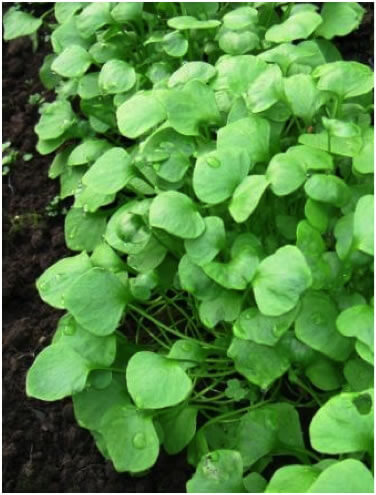Claytonia – Winter Purslane
€2.20
Description
Claytonia – Winter Purslane is also known as miner’s lettuce. It is one of my favourite winter salads. It has a succulent mild taste and hardiness.
Sowing:
August to September for outdoor growing
September for indoor growing
Sow 5 – 7 seeds per module about 1cm deep and about 5 weeks later plant out.
Growing Claytonia – Winter Purslane:
Spacing:
Between rows: 25cm
Between plants in the row: 20cm
Plant care
In order to get the best crop always keep weed free and water when required.
Harvesting
You can either pick individual leaves as they are needed or use the cut and come again method. Whereby you cut all the leaves just above the growing points (about 5cm above ground level). Then repeat every 3 weeks.
Potential problems
Slugs and snails are the main problem for Claytonia – Winter Purslane
How much to grow?
One square metre of Claytonia – Winter Purslane will provide you with healthy greens for many winter salads.
Varieties
There are no named varieties of claytonia.
Approx. seed count: 150
Further information:
Latin name:
Montia perfoliata
Family:
Portulacaceae
Claytonia is often called winter purslane and sometimes miner’s lettuce. Interestingly, it got the name miner’s lettuce because of its use as a fresh salad green by miners in the 1849 Gold Rush in California.
It is one of these amazingly productive salad plants that will keep you in fresh healthy greens throughout the winter. Claytonia is also a favourite of small children who wouldn’t touch other salads. And it is an ideal crop for the polytunnel and greenhouse as it makes excellent use of the space when not much else can grow.
Soil and site
In its native North America it grows in acid sandy soils. In similar fashion it can also cope easily with a wide range of soil and site conditions. However, it does prefer cool damp growing conditions.
Sowing
The best – and possibly the only – time to sow claytonia is in late August to late September. So you will get well-established transplants ready to plant in October for harvesting from November until April the following year. Hence, there is not much point in sowing it at any other time as it will bolt prematurely.
I usually sow a pinch of seeds in modules (5-7 seeds per cell). Then the modules are ready for planting about 5 weeks after sowing.
Spacing
Between rows: 25cm
Between plants: 20cm (5-7 plants per station
Plant care
It is essential to keep the plot completely weed free and watered regularly.
Harvesting
You can either harvest individual leaves as they are needed or use the cut- and-come again method. This is when you cut the whole plant at about 5cm height from the soil level. And basically the leaves will re-grow within the next two to three weeks. Then after cutting it you should tidy up the plant and remove any old or decaying stalks.
Claytonia can be eaten fresh as a salad or it can also be boiled like spinach. As it is a wonderful cropper you will often have a surplus that you can make into a delicious fresh winter soup.
Potential problems:
Fortunately, apart from slugs and snails there are no pests and diseases that affect claytonia. Therefore it certainly is one of the easiest salads you can possibly grow.
Claytonia is somewhat of a botanical curiosity. This is because the flowers are grouped together above a pair of leaves that are united together around the stem. Therefore they appear as one circular leaf.
For more information have a look at my monthly newsletters on:
https://greenvegetableseeds.com/newsletters/
For information on organic certification:
Have a look at the Irish Garden magazine:




